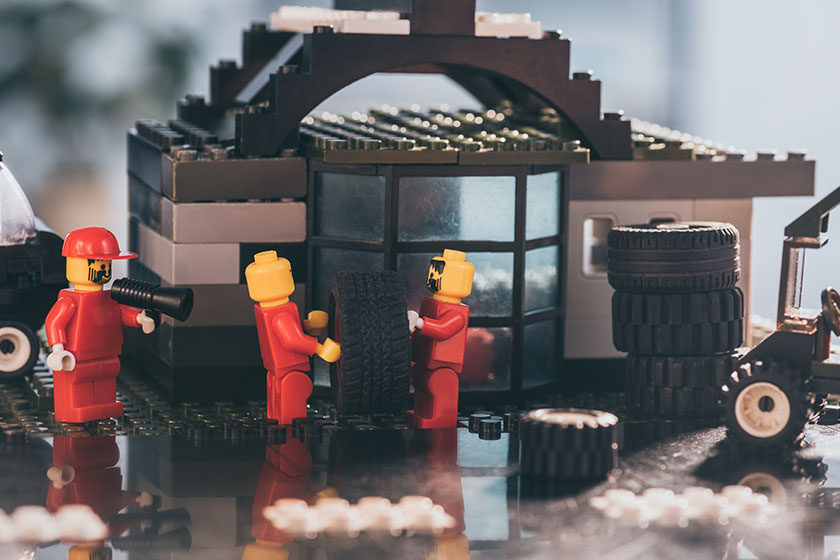In the realm of therapeutic activities for those living with dementia, an unlikely hero emerges from the toy box: Lego. This colorful building block, a staple of childhood playrooms around the globe, has proven to be more than just a toy. For individuals in retirement communities, particularly those navigating the challenges of dementia, Lego therapy for dementia patients offers a multifaceted approach to cognitive engagement, fine motor skill enhancement, and emotional well-being.
Cognitive Stimulation and Motor Skills
Lego therapy provides a unique blend of cognitive stimulation and motor skill enhancement. Engaging with Lego blocks requires the identification of colors and shapes, tasks that encourage mental agility and focus. The varied sizes of Lego, including traditional small bricks, Duplo blocks for easier handling, and Mega Bloks in maxi and mini sizes, cater to different levels of motor skill abilities.
For residents with limited hand mobility, larger blocks can offer a more accessible option, ensuring that everyone has the opportunity to benefit from this therapeutic activity.
Fostering Creativity and Problem-Solving
Creativity plays a critical role in enhancing the quality of life for individuals with dementia. Building with Lego allows for endless possibilities, from simple structures to intricate models, tapping into the creative reservoirs of the mind. This process of creation is not just about the end product but the journey of problem-solving and innovation.
For dementia patients, the act of selecting pieces and envisioning a project provides a sense of purpose and accomplishment, key components in maintaining cognitive health.
Socialization and Family Bonding
Lego therapy transcends generational gaps, making it an excellent activity for family visits in retirement communities. It creates a shared space where residents, their families, and even memory care professionals can come together to build, share, and connect. This interaction fosters socialization for dementia patients, who often face challenges in this area.
The inclusive nature of Lego building encourages conversation and collaboration, contributing to a supportive and engaging social environment.
Therapeutic Benefits and Mindfulness
Building with Lego has therapeutic benefits that extend beyond cognitive stimulation and social interaction. For dementia patients, the focused activity of sorting and assembling Lego pieces can serve as a form of mindfulness practice. It offers a reprieve from anxiety and stress, allowing individuals to immerse themselves in the moment.
Research supports the use of Lego as a mindfulness tool, with many adult fans reporting that it aids in relaxation and stress reduction. In a retirement community setting, incorporating Lego therapy into the schedule can provide a calming and enjoyable outlet for residents.
Triggering Positive Memories
Perhaps one of the most poignant aspects of Lego therapy for dementia patients is its ability to evoke cherished memories. For many, Lego was a part of their childhood, and revisiting this activity can spark recollections of joyous moments. These positive memory triggers are invaluable in dementia care, offering comfort and a sense of identity. Within the context of a retirement community, activities that connect residents to their pasts contribute to a deeper sense of belonging and self.
This therapy presents a holistic approach to care that addresses cognitive, physical, emotional, and social needs. Its simplicity, coupled with the depth of engagement it offers, makes Lego an innovative and effective therapeutic option.
Retirement communities that incorporate Lego therapy into their retirement community amenities and retirement community events are providing residents with a valuable tool for enhancing their well-being. As we continue to explore and understand the benefits of creative and interactive therapies, Lego stands out as a beacon of innovation in dementia care, proving that sometimes, the simplest tools can have the most profound impact.







